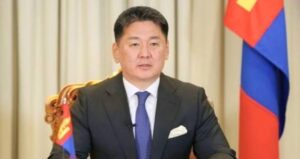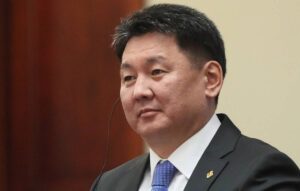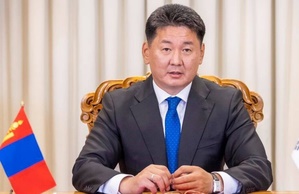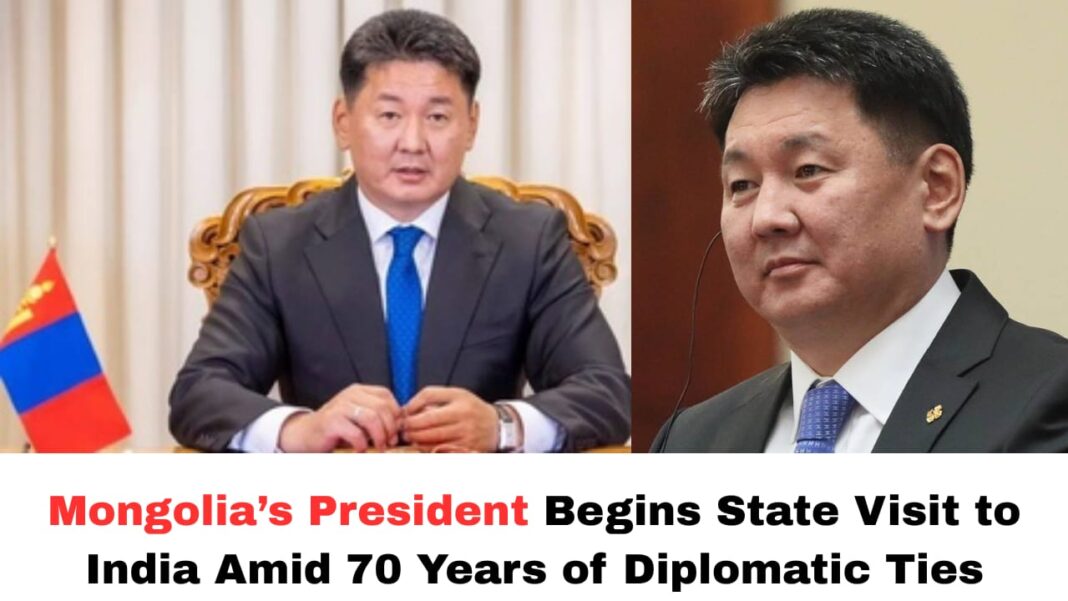Digital News Guru National Desk:
Mongolian President Khurelsukh Ukhnaa Embarks on State Visit to India (Oct 13–16, 2025)
Mongolian President Khurelsukh Ukhnaa begins a four-day state visit to India from October 13 to 16, 2025, at the invitation of Indian President Droupadi Murmu and Prime Minister Narendra Modi. The trip comes at a significant moment: both countries are celebrating the 70th anniversary of formal diplomatic relations, giving the visit extra symbolic weight.
This will be President Khurelsukh’s first visit to India as head of state. During his stay, he will meet India’s highest-level leadership and engage in discussions to deepen and expand the existing Strategic Partnership between the two nations.

Key Agenda Items & Initiatives
While full details of all agreements are not yet public, the stated agenda, prior consultations and media analysis highlight several likely focus areas:
- Review & Expansion of Strategic Partnership
The two leaders are expected to assess the progress made since the Strategic Partnership was elevated in 2015. New sectors of cooperation may be defined or existing ones deepened. Areas likely under review include defence, energy, mining, trade, culture, technology, and regional security. - Business & Investment Forum
A Mongolia-India Business Forum is planned as part of the visit. This may be used to commit new business deals, encourage joint ventures, and attract investment in key sectors. - Cultural Diplomacy
In keeping with strong historic, spiritual, and cultural ties (especially through Buddhism), there are to be cultural programs, exhibitions, and performances — including the traditional Morin Khuur (horse-head fiddle) and presentations under the title “Beautiful Country of Mongolia.” These events help reinforce the soft-power dimension of the bilateral relationship. - Regional & International Cooperation
Discussions will likely include geopolitical and regional security issues, connectivity, and cooperation in multilateral forums. Mongolia has been active in aligning with India on regional frameworks and international bodies. - Strategic Projects: The Oil Refinery & Natural Resources
A recurring theme in recent India-Mongolia talks is the Oil Refinery project, which has become a symbolic and practical element of their cooperation. India has provided support via lines of credit, and there is interest in ensuring its timely completion. Also, Mongolia’s natural resources — particularly in mining, including possibly rare earths, copper, and coal — are of interest to India, both for trade and for strategic supply chain resilience.
Historical & Symbolic Context
- 70 Years of Diplomatic Ties: Formal diplomatic relations between India and Mongolia were established in December 1955. This milestone has led to several year-long commemorative events, high-level exchanges, and a reexamination of shared goals.
- “Third Neighbor” Policy: In Mongolian foreign policy, India is one of its “third neighbors” — countries outside its immediate geographic borders with which Mongolia seeks strong strategic, economic, and cultural ties. This visit reinforces that orientation.
- Past Cooperation & Trust: The India-Mongolia relationship has seen multiple signature projects, exchanges, and shared initiatives: from educational and cultural links, to joint exercises, to natural resource and infrastructure cooperation. The visit is likely to build on this base.

Challenges & Areas to Watch
While there is much promise, realising outcomes will depend on navigating certain challenges:
- Logistics & Follow-Through: Signing new agreements is one thing; implementing them — especially with infrastructure, resource extraction, or large-scale investment — will require consistent political will, financing, and coordination across many administrative layers.
- Connectivity & Geography: Mongolia is landlocked, and its transportation routes often involve transit through neighboring countries. Any trade in bulk materials or energy resources must account for transportation costs, transit regimes, and diplomatic constraints.
- Economic Viability & Resource Management: Mining, energy, and refining projects require large upfront investments. Ensuring environmental sustainability, local stakeholder buy-in, and regulatory clarity will be essential.
- Balancing Strategic Interests: As India deepens ties with Mongolia, there’s a balancing act in relation to other regional powers. Both countries need to ensure that strategic cooperation does not become a zero-sum game, especially given Mongolia’s geographic proximity to China and Russia.
What Outcomes May Emerge
Based on the agenda and recent work, some likely tangible outcomes of the visit may include:
- New MoUs / Agreements in sectors like mining, energy, education, defence, and perhaps newer sectors like space, technology, or environmental cooperation.
- Investment Pledges from Indian firms, possibly commitments to engage in Mongolia’s infrastructure or resource projects.
- Cultural Exchange Programs: Scholarship announcements, exchange programs for students, artists, or monks; enhanced visa facilitation could be on the cards.
- Formal Statements / Joint Communiqué outlining shared priorities for the next 5-10 years.
- Regional Cooperation Initiatives: Perhaps in connectivity, transit, joint training or capacity building in disaster management, cybersecurity etc.

Significance for Both Nations
For Mongolia, this visit offers an opportunity to diversify its international partnerships, reduce over-reliance on neighboring powers, accelerate development through investment and technology transfer, and amplify its voice in regional strategic affairs.
For India, Mongolia is part of its broader foreign policy push to strengthen ties in its “extended neighborhood,” secure access to strategic minerals, expand trade and connectivity, build soft-power linkages through culture, and reinforce its role as a stabilizing partner in Asia.
Conclusion
President Khurelsukh Ukhnaa’s state visit to India from October 13-16, 2025, is not just a ceremonial gesture — it is a marker of deepening ties. Set against the backdrop of seventy years of diplomacy, this visit could well define the next chapter of India-Mongolia relations: one focused on more ambitious economic cooperation, stronger strategic alignment, and richer people-to-people and cultural engagement.
If managed well, the commitments made during this visit might lead to tangible benefits — in trade, investment, energy security, cultural enrichment — not just symbolic of friendship, but transformative in practical terms for both nations.
You May Also Read: Delhi’s CAQM Faces 35% Staff Shortage, Hindering Pollution Control Efforts








